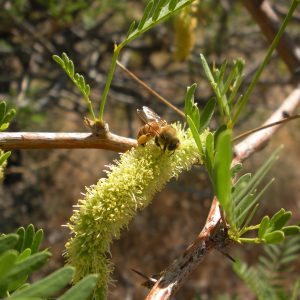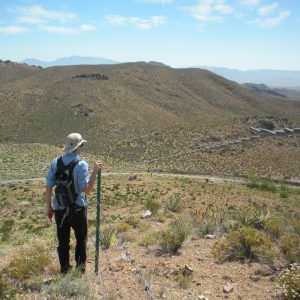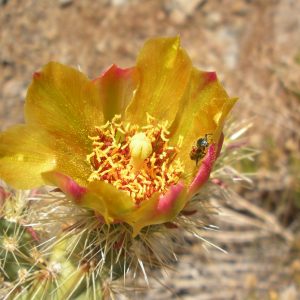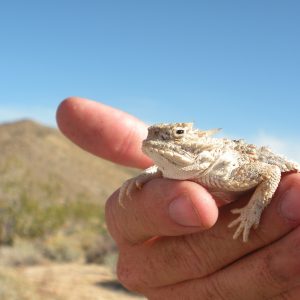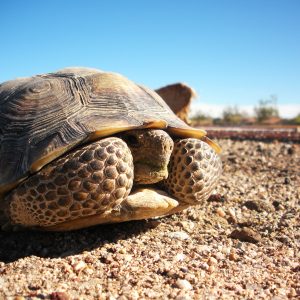Hello again from Ridgecrest CA. As of this week I am entering the third month of my internship. It’s hard to believe. The last two months we have been rushing to gather as many collections as we could for the SOS program. The flowering season is very short in the Mojave, and there hasn’t been any more rain, so it looks as if we may be at the end of our seed collecting. Fortunately, we had more rain this season than any previous years for the SOS program in this area. To give an idea as to what that means in the desert, we have made 18 complete collections so far, whereas in the previous 5 years the average was 6 complete collections. None-the-less, we feel pretty good about being able to provide a good collecting season. We have 3 more months to collect – the hard part will be trying to find something that hasn’t dried up.
The highlight this past month: I took it upon myself to work with the Desert Tortoise Research Natural Area (DTRNA), an organization dedicated to protecting the Desert Tortoise, to organize future cooperation with the SOS program to provide seed for the DTRNA. I set up a training day in which the DTRNA joined us in the field collecting seeds. We taught them about the protocol, what we take into consideration, and how to identify the target collection. We made three complete collections in one day! It’s amazing how much can be done when you have a few extra hands. All of the details haven’t been worked out but I really hope that there will be a way to continue using volunteer help to collect seeds and use the extra for restoration purposes in this area. There has also been talk of another organization interested in doing the same thing. I am working with my mentor to figure out the best approach to accomplishing this. Jeff Gicklhorn has been a really supportive, patient, knowledgeable and (incredibly) nice mentor.
One of the great things about the position in Ridgecrest is that the office is very supportive of taking advantage of the learning opportunities through the BLM. This week I am participating in NISIMS (National Invasive Species Information Monitoring System) training, and next week we will be traveling to Las Vegas for a NEPA class. This month is basically already booked full!
Cheers,
Leah Madison
Ridgecrest California BLM Field Office





